#portuguese monarchs
Photo

Portrait of King Henry I of Portugal, 1587, by Cristofano dell'Altissimo.
#Cristofano dell'Altissimo#reino de prtugal#kingdom of portugal#house of aviz#list of monarchs#cardinal king#Henry I#king of portugal#the chaste#o cardeal rei#portuguese monarchs
3 notes
·
View notes
Text
Jess Watches // Tues 28 Nov // Day 67
Synopses & Favourite Scenes & Poll
BBC Ghosts
5x05 Carpe Diem
Robin has an realization that has a profound impact on the ghosts.
Everyone getting closer to being sucked off and I'm sad about it:
But don't tell my heart, my achy breaky heart
I just don't think he'd understand
And if you tell my heart, my achy breaky heart
He might blow up and kill this man
Ooh
What We Do in the Shadows
5x01 The Mall
The vampires discover the mall.
The special effects on Guillermo's eyes when he turned was really cool. Is he half vampire half human now because of his Helsing blood? Detective Cravensworth is on the case.
The Fall of the House of Usher
Ep 1 A Midnight Dreary
A wealthy CEO faces a criminal investigation amid tragedy, trauma, and a supernatural threat. The Usher family learns an informant lurks among them.
Bruce Greenwood playing another rich asshole with an occasional softer side. Good for him lol. And it was fun briefly seeing which previous cast members were being haunted this time around.
#bbc ghosts#what we do in the shadows#wwdits#the fall of the house of usher#tfothou#polls#tumblr polls#jess watches#day 67#i meant to watch monarch: lom#but i accidentally got a portuguese dub#silly me
4 notes
·
View notes
Text
.
#in light of the Romanov admin mentioning languages#it should be noted that the admins here speak both German and Spanish#and can manage italian Portuguese and French#oh and Dutch#must not forget Dutch#< not as multilingual as many of the monarchs in this bracket but trying our best
1 note
·
View note
Text
The secondhand embarrassment I feel when I hear people saying they love the monarchy / consider themselves monarchists is immeasurable. In this century??? Disgusting.
#maybe it's because I'm from a country who shot dead and exiled their last monarchs but holy shit#i just saw a man on the news saying he hopes charles ''makes the monarchy fairer''#?????????? hello??????????#jesus fucking christ#heard a journalist talk to a portuguese ''monárquico'' and 1) ew and 2) the word itself made me cringe
1 note
·
View note
Text

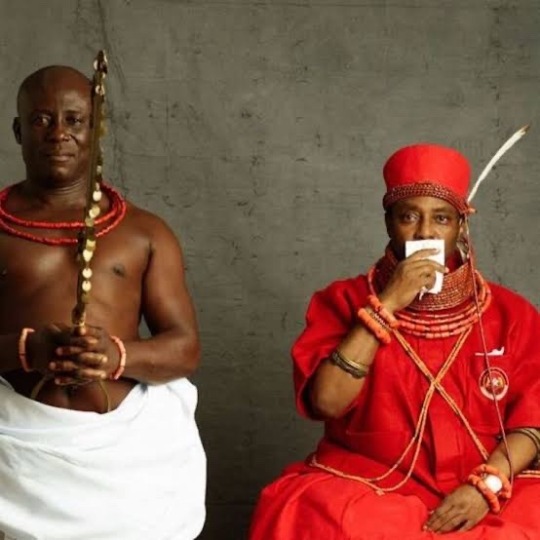
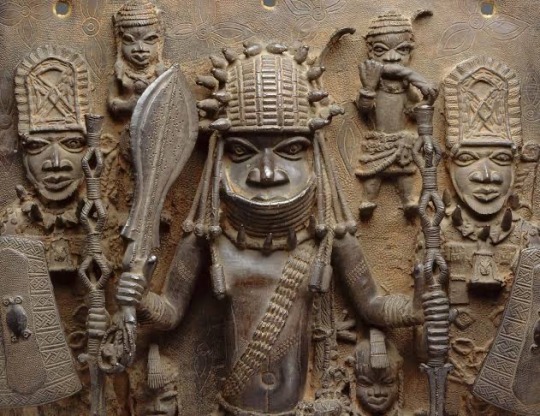
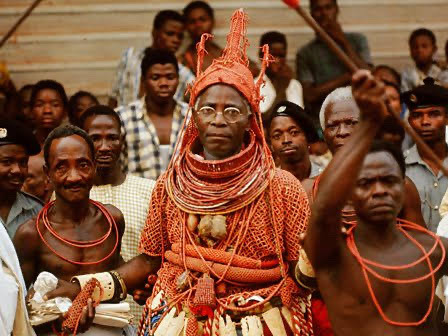
Black history is not slavery
Slavery is not the only history of black Black history goes deeper than slave trade
This is a message for my black brothers and sisters
Today I will be talking about the people of benin
The historical kingdom of Benin was established in the forested region of West Africa in the 1200s C.E. According to history, the Edo people of southern Nigeria founded Benin. They no longer wanted to be ruled by their kings, known as the ogisos. They asked a prince from Ife, an important West African kingdom, to take control. The first oba, or king, in Benin was Eweka. He was the son of the prince from Ife.The kingdom reached its greatest power and size under Oba Ewuare the Great. He expanded the kingdom and improved the capital, present-day Benin City; the city was defined by massive walls. The height of power for Benin’s monarchs began during this period. To honor the powerful obas, the people of Benin participated in many rituals that expressed their devotion and loyalty, including human sacrifices.Artists of the Benin Kingdom were well known for working in many materials, particularly brass, wood, and ivory. They were famous for their bas-relief sculptures, particularly plaques, and life-size head sculptures. The plaques typically portrayed historical events, and the heads were often naturalistic and life size. Artisans also carved many different ivory objects, including masks and, for their European trade partners, salt cellars.The success of Benin was fueled by its lively trade. Tradesmen and artisans from Benin developed relationships with the Portuguese, who sought after the kingdom’s artwork, gold, ivory, and pepper. In the early modern era, Benin was also heavily involved in the West African slave trade. They would capture men, women, and children from rival peoples and sell them into slavery to European and American buyers. This trade provided a significant source of wealth for the kingdom.Benin began to lose power during the 1800s, as royal family members fought for power and control of the throne. Civil wars broke out, dealing a significant blow to both Benin’s administration as well as its economy. In its weakened state, Benin struggled to resist foreign interference in its trading network, particularly by the British. A desire for control over West African trade and territory ultimately led to a British invasion of Benin in 1897. Benin City was burned by the British, who then made the kingdom part of British Nigeria (which became Nigeria after the country gained independence in 1960). After that time, the kingdom no longer played a governing role in West Africa. However, even today, the oba still serves in Benin City as a government advisor.


#life#culture#black history#history#blm blacklivesmatter#aesthetic#generations from exile tribe#genshin fanart#sculpture#nigeria#heritage#transgender#traditional media
719 notes
·
View notes
Photo

The Habsburg Empire, 16th-17th centuries
« Atlas historique », Nathan, 1982
by cartesdhistoire
In 1519, Charles Quint found himself virtually the master of Europe. However, instead of viewing his role as a spiritual mission, he felt a deep sense of duty to his lineage. This obligation drove him to perpetuate, and if possible, enhance, what he had inherited for his successors. This principle, deeply ingrained in the tradition of the House of Burgundy, became a cornerstone of Habsburg governance, with each possession managed as if he were the sole monarch of each one.
In 1556, Philippe II inherited the ancient estates of Burgundy, the Spanish Monarchy (including its Italian dependencies), and the Duchy of Milan. Throughout his foreign policy, the sense of dynasty always took precedence: the Dutch were treated more as rebels than heretics; the incorporation of Portugal in 1580 was driven by the defense of succession rights rather than expansionism. Similarly, interventions in the French civil war and the Armada against England in 1588 aimed more at defending the integrity of heritage than pursuing a crusade.
Under Philippe III (1598-1621), signs of decline began to emerge within the Hispanic monarchy. The reign of Philippe IV (1621-1665) was marked by continual unrest, with no respite for a year of peace. Involvement in the Thirty Years War strained the Castilian Treasury, leading to economic crises in the 1630s and subsequent anti-tax revolts. The dissatisfaction of peripheral elites culminated in secessionist revolts in Catalonia and Portugal in 1640, while nobles conspired against the Crown. In Italy, revolts in Naples and Sicily in 1647 further exacerbated the crisis. Amid internal opposition, economic depression, and military setbacks, the Hispanic Monarchy struggled for survival, with only the Portuguese secession achieving success.
104 notes
·
View notes
Photo

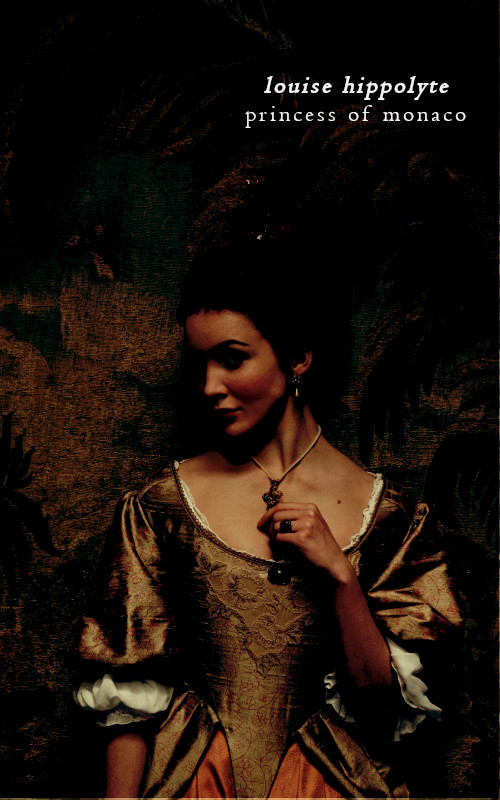
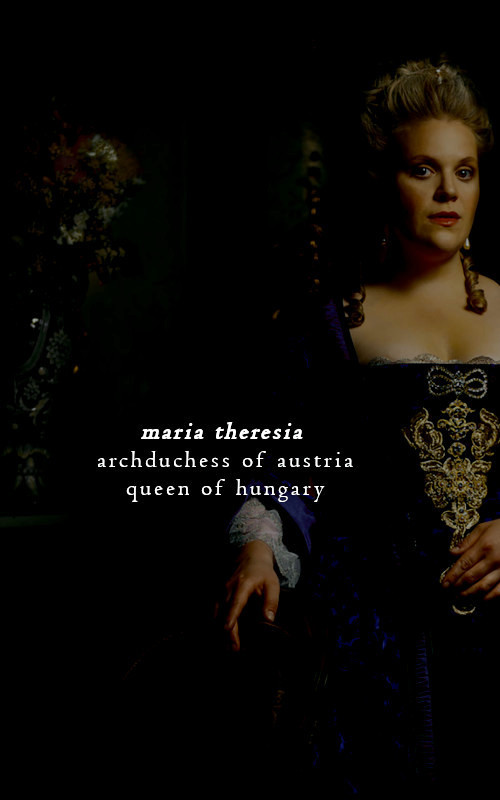
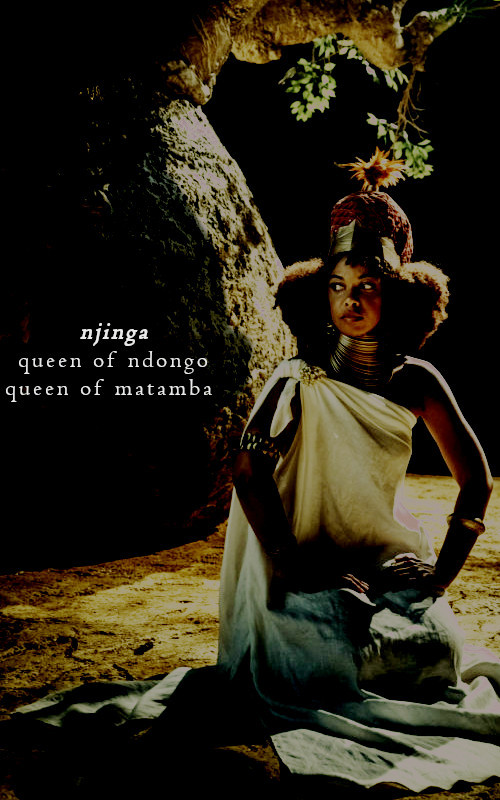
Favorite list of royal women | Regnant queens (who crowed herself queen without her husbands)
Been a queen regnant is not always easy specially when you are married but mor common than one would think. Here four of my favorite queen that were married and despite what society, and often the husband himself, thought decided that her lands by heritage or conquest were only hers to rule.
i. [1081-1116] Called The Reckless, Urraca was one of the most powerful reigning Queens of her time having inherithed the kingdom of León. Upon the death of her first husband she was convinced to marry Alfonso of Aragon the most successful warrior king of the Iberian Peninsula. It went horribly wrong. Personalities clashed and Alfonso emprisoned Urraca at one point. With Galicia rebelling and the Almoravides menace the spouses still went to war againts each other. Finally they separate and while Urraca still has a long way ahead and could keep most of her lands for herself.
ii. [1697-1731] Louise Hyppolite was at her time of birth the last Grimaldi. Monaco was under French control and it was decided that man from the French King family will be Louise’s husband and rule along with her. She was married and had to leave her land with her husband. Described as shy and submissive she did not enjoy her time at Versailles. When her father was ill she came back alone to Monaco and when he died she crowned herself Princess of Monaco with the people enthusiastic support naming her firstborn heir. There is no much her husband could do and though she ruled fr a short time she did it as the sole Princess.
iii. [1717-1780] Maria Theresia’s father Emperor Charles VI of the Roman Empire, did not prepared her to rule as he was convinced that her husband would rule for her. However, she had other plans and when her father died Maria Theresa, a 23 years old set to stablish her right as a moanrch against Prussia and most of Europe. She manage to gain ruling experience and be a monarch for 40 years. Though she deeply loved her husband she did not let him rule in her name and even refused to kneel in front of him when he was elected Holy Roman Emperor as she was of highest ruler. She was Sovereign of Hungary and Bohemia and Archduchess of Austria on her own right her husband being the consort.
iv. [1583-1663] Njinga was Queen of Ndongo after her father and brother. At the time with the Portuguese slave trade Njinga became a symbol of resistance to the Europeans. In order to gain power in the center of the region she married an Imbangala leader and learned the techniques and strategies of his people. However when she set to conquer the kingdom of Matamba and ruled there as the Queen as Matamba had tradition of female rulers. As she gained influence she was recognized as one of the great queens of the region at the time.
#historical women#women in history#maria theresia#njinga of ndongo and matamba#urraca of leon#louise hyppolite of monaco#maria theresa of austria#history
136 notes
·
View notes
Note
How... hm, how to put this... how aware were rulers of regarding other nations in the medieval and early modern periods? Like, would the ruler of Portugal know who the Timurids were? Or what was going on in Muscovy at the time? Like, how far east and south did their knowledge go before it turned into "Here Be Dragons" legend and rumor? Did they know who the Mali and Songhai were?
The answer is that it depends, largely due to differing geographies and trade patterns and time periods. For example, the ruler of Portugal might well know who the Timurids were - if it was after Vasco de Gama's "discovery" of the Cape Route to the Indian Ocean, because it's just a quick jaunt up the Indian coast to get to the Persian Gulf.

I doubt the King of Portugal would have much to do with the Tsar of Russia, but Queen Mary and Queen Elizabeth I of England definitely did - because the English government had chartered the Muscovy Company in 1555, which ferried diplomatic exchanges between Ivan IV and Elizabeth I along with the huge cargo of wool for fur and fur for wool.

And certainly the monarchs of western and central Europe would have been familiar with the kingdoms of eastern Europe, because they were all fucking inbred relations of each other.
For example, Louis the Great was King of Hungary, Croatia, and Poland, but he was also of the House of Anjou and his brother was the Duke of Calabria who married to the Queen of Naples, who also was the Countess of Provence and the Princess of Achaea. - and after his brother was assassinated, Louis invaded Naples and claimed the title of King of Naples, Sicily, and Jerusalem!

Similarly, Henry III of France was elected King of Poland and Grand Duke of Lithuania in order to keep out the Hapsburgs, and Henry's mother was Catherine de Medici. So there was probably a lot of knowledge of different countries just from family letters...

As for Mali and Songhai, the Portuguese and the Dutch "traded" extensively with West Africa in the 15th-17th centuries. So they certainly would have traded with the Mali and then the Songhai Empires. But I doubt the Tsar of Russia would have known much about them, and so it goes...

113 notes
·
View notes
Photo
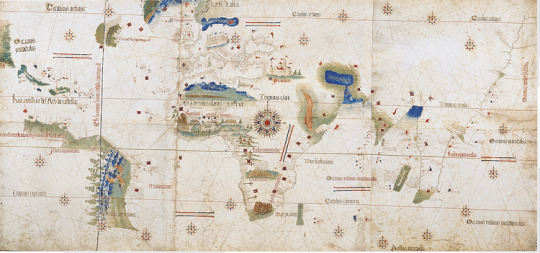
Treaty of Tordesillas
The 1494 Treaty of Tordesillas (Tordesilhas) was an agreement between the monarchs of Spain and Portugal to divide the world between them into two spheres of influence. The imaginary dividing line ran down the centre of the Atlantic Ocean, leaving the Americas to Spain and West Africa and anything beyond the Cape of Good Hope to Portugal.
The agreement between the two states was fully tested when the Spanish found a maritime route to Asia via the Pacific Ocean, Spain conquered the Aztecs and Incas, Portugal sailed into the Indian Ocean and beyond, and settlements were established in Portuguese Brazil. With this colonial expansion, the two kingdoms squabbled over states and peoples that had never even heard of these two small countries at the end of Europe.
The North Atlantic
The Portuguese started modestly with their empire-building, first colonizing the uninhabited North Atlantic island groups of Madeira from 1420, the Azores from 1439, and Cape Verde from 1462. When the treacherous Cape Bojador was navigated in 1434 by the explorer Gil Eannes, the Portuguese were able to access the trade and resources in West Africa without dealing with Islamic North African traders. The new king, John II of Portugal (r. 1481-1495), pushed for more and so São Tomé and Principe were colonized from 1486. However, yet another island group, the inhabited Canary Islands, were prized by both Spain and Portugal, and the colonial competition heated up considerably.
Prince Henry the Navigator (aka Infante Dom Henrique, 1394-1460) had organised the Portuguese expeditions to explore and develop the North Atlantic islands but his ambitions in the Canaries were repeatedly thwarted. Spanish forces and the indigenous Guanches repelled the Portuguese three times, but the matter remained unsettled. Spain and Portugal were at war between 1474 and 1479, and this period saw a brief occupation of Santiago in the Cape Verde group by Spanish forces. The war came to a close with the peace treaty of Alcáçovas-Toledo (1479-80), an agreement which also saw the first attempts to settle which geographical areas should belong to the Spanish and which to the Portuguese. Spain’s claim over the Canaries was recognised, as was Portugal’s over Madeira, the Azores, Cape Verde, and all trade in West Africa.
Continue reading...
25 notes
·
View notes
Text
“By ancestry, Elizabeth was primarily English - going back five generations, 78.13% of her ancestry was English (along with 6.25% each Welsh and Sicilian, and 3.13% each French, Irish, and German.)
Mary’s ancestry, on the other hand, was more mixed. Her largest group of ancestry to five generations was English, but only 37.5%, along with 31.25% Spanish, 12.5% Portuguese, and the same percentages of Welsh, Sicilian, French, Irish, and German as her half-sister above (all being from their father.)
However, through her mother Anne Boleyn, Elizabeth’s royal English ancestry was much weaker - both of her Anne’s parents were 4th-generation descendants of daughters of Richard FitzAlan, 11th Earl of Arundel, and his wife Lady Elizabeth de Bohun, a great-granddaughter of King Edward I (reigned 1272–1307).
Mary’s mother Catherine of Aragon, had more recent royal English ancestry - she was descended from two different daughters (one from each of his first two marriages) from John of Gaunt, Duke of Lancaster, the son of King Edward III (reigned 1327–1377) who founded the Lancaster branch of the royal family which battled the York branch in the Wars of the Roses.
Interestingly, this made Mary the first English monarch to have both royal ancestry from both the Lancaster and York English royal houses - and the last until Charles II in 1660.”
(I don’t remember the exact source of this information that I had in my drafts but I found it interesting to share )
46 notes
·
View notes
Text
Proto-fascists are oficially the 3rd political force in my country with a thinner than I would have wanted margin to the the usual bipartisan center parties. Plus, the left was crushed as far as seats in the parliament, mfs could rewrite the constitution, fuck 50 years of progress up in the 50th anniversary of the portuguese carnation revolution, which crushed fascism, because the center-right has no majority and will have to either talk with the proto-fascists or the neoliberals to build a government (mind you, these dudes were already running along with a conservative party and a FUCKIN MONARCHIC ONE WHILE WE'RE MORE THAN 100 YEARS DEEP INTO THIS BEING A REPUBLIC THING). We will now have to deal with a bunch of ultraconservative, mysoginistic, homophobic, xenophobic, racist, pro-capital bill proposals and rethoric 24/7.
How is your week going?
27 notes
·
View notes
Note
Thoughts on Macau? I think he'd be an interesting character to think about
💛 MACAU + BRASIL 💚

I know the question was directed to Macau, but it will eventually end up being Maycentric lol since the vision I always bring is the characters' relationships and their interactions with my oc.
In this case, a member of the Portuguese-speaking community and we have a lot to talk about. However, I'm not an internationalist, I know a little about diplomacy and history as a simple hobby. I am not an authority figure.

🎲 MACAU:
My human name for him is Miguel da Silva Xavier/Chan Yee Cheung. Sometimes he may present himself as Miguel Chan. His nickname is Mimi and no one can stop me from calling him like this.
I remember someone a long, long time ago in the fandom giving him the fanon name "Xavier", so it got stuck in me for years, but it sounds better as a surname, in my opinion. So I preserved the Xavier, but as a surname, as a memory, for the sake of that good old-times fanon name, haha.
I baptized him Miguel, fits him better. Actually, Afonso did it, not me xd I am not the colonizer here. 💋
About the Cantonese name... I am not sure if it is correct, I spent so much time researching Cantonese names, and surnames, about important Macanese people, so I could have an idea of names... So, I am deeply sorry if I commited a mistake, if you are Cantonese/Macanese, feel free to correct me. I really tried my best 😔 uff

Lusofam (from Brazil's perspective)
Firstly, nowadays, Mayara barely sees Afonso as a father figure (perhaps due to a kind of resentment that she developed over time). Although yes, in other historical moments Portugal and Brazil have maintained a kind of relationship similar to that of parent-child, but it was a very troubled relationship. And, it's still a complicated relationship. Although, currently, they are on great terms and cooperate with each other. They've been rebuilding a kind of family relationship, but there are still many fights and disagreements; It is very complex to define lol
I know it will sound sad, but May is a bit isolated from Lusofam. Not for the same reasons as the Hispanic American countries, but due to the distance. And because she is not all aware of them.
Brazil is the only country that speaks Portuguese in the Americas. The other Portuguese speakers are too far away to create strong family ties with, although yes, she is interested in getting closer to the Lusofonia, and little by little the relationship between them is becoming closer.
Many of these countries and regions, however, had contact with her at some point during Maylore.
The closest lusófono Mayara feels to having a family relationship (besides Afonso) is Lívia (Angola). With whom I believe she created a true fraternal bond (Brazil was the first country to recognize the Independence of Angola, for example).

HISTORICAL TIES
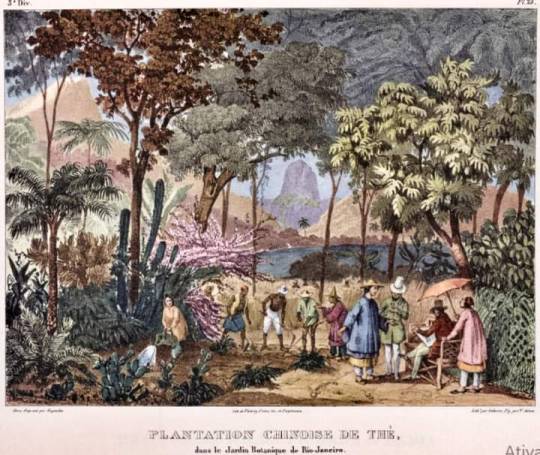
(Chinese Tea plantation in the Jardim Botânico of Rio de Janeiro)
The first relations between Macau and Brazil took place through trade and architecture through Portugal during colonial times.
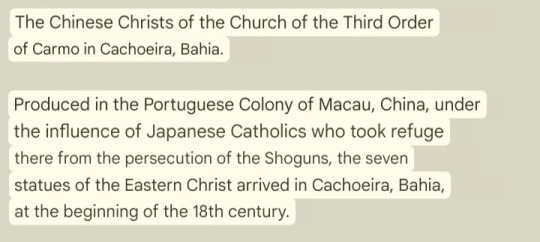
(Via: Terra de Santa Cruz)

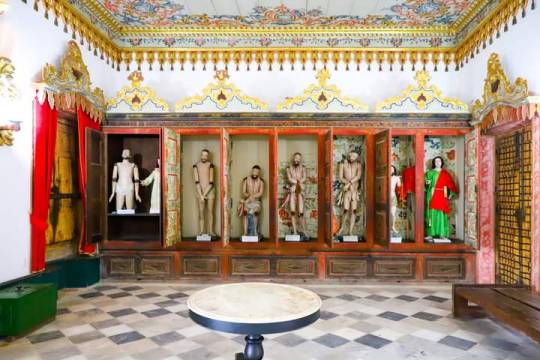
Chinese Jesus Christ.
"They came in one of the ships that traveled the "Indian route", a trade route between Europe and Asia. The presence of these statues in Bahia may have been the result of a mercantile exchange between Brazil and China. Recôncavo's tobacco was appreciated in the East, yielded profits for the Bahian farmer and enriched the region.
One of the fans of Cachoeirense tobacco would have been the Chinese emperor Quianlong (1711-1799), fourth monarch of the Manchu Qing dynasty, who had relations with the Portuguese through Macau. It is likely that, in this circulation of goods and culture between the two regions, a Carmelite friar, a businessman or a high-ranking official from the Portuguese overseas Empire bought or exchanged the set of sculptures for tobacco, giving them as a gift to the Order. Terceira do Carmo." (Font: A Terra de Santa Cruz, FB)

Leão de Fô decorating a church located in João Pessoa, Paraíba.
This is a Chinese-looking statue. Sculpted by Macau and Goa artists in Brazil. This was a type of called "Arte Achinesada", "Chinese-looking art".
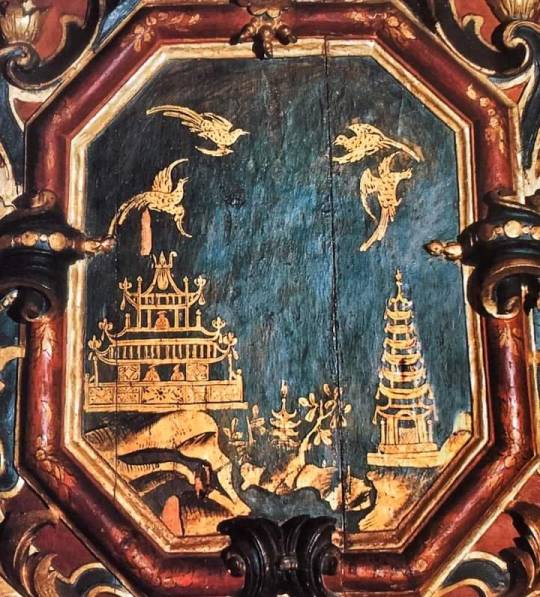
Church of Nossa Senhora do Ó de Sabara, Minas Gerais, with Chinese Pagoda style and Macanese-Goan Chinese-looking art, made by a Goan artist.
This type of art was very popular at the time, and inspired Brazilian artists as well.
The first Chinese Immigrants in Brazil came from Macau:
Now let's talk about what I HC that I believe it was the first personal contact between May and Mimi.
"In 1812, a boat from Macau with tea planters arrived in Rio de Janeiro." First image above in Historical Ties.
"The truth is that there is no consensus on the date. Nor, even, about whether this landing of immigrants was the first contact between China (always through Macau) and Brazil." (A/N: I believe not, due to the infos above).
"Leonor Diaz de Seabra, one of the Portuguese who has most studied the relationship between China and Brazil, points to 1810. The professor at the Department of Portuguese at the University of Macau (and at the Research Center for Luso-Asian Studies) argues that since 1810, tea cultivation began, in the Botanical Garden of Rio de Janeiro, with plants imported from Macau and with 200 Chinese to work there."
(Font: PontoFinalMacau.Wordpress)
Macau wanted Brazil
"If there is no [...] scientific evidence in the Macau archives about the date of sending the ship "Vulcano" with farmers from Hebei to Rio de Janeiro, where they dedicated themselves to planting tea, there is no doubt that Macau has been trying to get closer to Brazil for a long time."
(Font: PontoFinalMacau.Wordpress)
This makes me think that, yes, Brazil and Macau may have met each other somewhere during the ~1810~, a little after the Portuguese Royal Court moved to Brazil. This is a HC, however.
(I DIDN'T GIVE THIS TITLE I JUST STOLE FROM THE SITE WHERE I GOT THE INFO OKAY I AM INNOCENT HERE DON'T LOOK AT ME)
CONCLUSION
AS YOU CAN SEE, there is too much to talk about them. But I had to stop here, because it is becoming too long. I would like to put more details. But you can research by yourself (if you understand Portuguese lol, or if I made another post like this, or to correct myself in the future(?).
Macau and Brazil, in my own views, do not have a fraternal bond (like Brazil and Angola, for example), however, this does not mean that the relations between these two are disposable. Quite the opposite.
Macau is a strategic point for closer ties with China, precisely because they have ties that unite them, which is the history with Portugal and the Portuguese language. (I may have read it in an article many years ago, but I don't remember it).
They do not necessarily need to see each other as siblings, but they can maintain a different relationship; like old acquaintances. Like...someone you have a fondness for based on your historical similarities!
Certainly. I don't see any problem with portraying Lusofam as a family in some type of AU, for example. Like, they all being siblings. I myself have already made drawings portraying May and Mimi as adopted siblings. And it is adorable to see them like this.
It is upon you. 🫵 This is just my vision on them. ☝️ I know I talked more about history and shit, but I think this way I could explain better my vision on them.
All the information I used has its fonts and credits.
Lívia (Angola) (c) @favichanwriter
13 notes
·
View notes
Note
Is Latino not an ethnicity????
It isn't (and it isn't a race either). Latinidad is a political identity with some sociological, cultural and historical background. What it does not have -and I cannot stress this enough- is shared genetics/common ancestry which is how I see it most referred.
Here's the definition of ethnicity from Wikipedia:
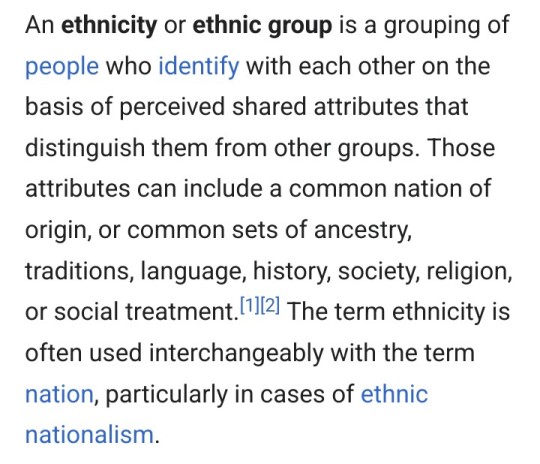
And to use roughly the same source, here's the Wikipedia disaggregation of Latin America today (which ofc I have issues with lol I'm not missing the irony of telling you "Latin America is sooo diverse" while using the "Asian" category, but I need to make do:

See what I'm getting at?
Let's continue, you can say "well I didn't mean genetics, I meant everything else"
Okay language:
Latin America includes hundreds of native languages like Quechua, Mayan, Guaraní (oficial language of Paraguay!), Aymará or Nahuatl, and always has! Without counting the beautifully mixed and improved Spanish, Portuguese (which I called Brasilero for years as a kid lol) and French, or even later additions like Welsh, Japanese, Chinese or Arabic from immigrant clusters that still speak it or are currently arriving into the continent.
So language isn't it either.
I don't even need to get into traditions c'mon look at Carnaval in Brasil, día de los muertos in Ecuador, an 9 de julio in Argentina and tell me those are all the same. Look at empanadas, tacos, humitas, pizza brasilera, tequeños, asado, sudados, etc
Religion? Argentina alone has the second biggest Islamic and Jewish populations in America after the US. Sure Christianity is paramount given the invasion and imposition by Catholic monarchies by the Spanish and Portuguese, but to say it's the only religion is to spit in the face of again, hundreds of native people's whose religions have been systematically erased since 1492. It is also quite reductive to only take institutionalised religions as valid forms of worship, or to ignore the fact that most Catholicism here would give European orthodox Catholics a stroke.
Now, history and social treatment, here's where the good stuff is.
Independencias:

These all look super different but these are processes and most of them took place in the first 3 decades of the 1800s so they're not that far off. These were carried out with an idea of hermandad. They used to be virreynatos under the same rule, we (patriotas) were all getting independence from the same monarch power (realistas). There was a lot of collaboration between administrations and armies. This was a decision from the leaders of the time, to seek strength in numbers.
The fact that we had to gain independence is a point of contact as well. At that time "patria" was understood as the desire to be independent, there were no neat lines to separate the territories. At this point in history you'll find lots of key people like San Martín, Juana Azurduy and Bolivar talking about "pueblos americanos" as a way to claim independence from imperialist/colonial European rule. (Brasil had a different history with the Portuguese court moving there)
The term Latin America or Latinoamérica came by a little later, the earliest it's been found used is 1856 by a politician from Chile, as you can see, the context it is used in is purely political.
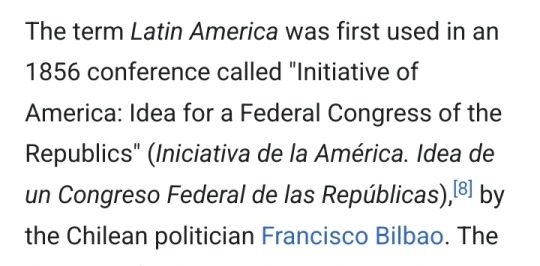
Historically, the term when used by Americans is heavily tied to a way to gather strength in solidarity for independence and rejection of foreign imperialist aspirations, from the United States, France, Spain, etc etc.
I think latinidad is in a way a self fulfilled prophecy, we were invaded and as such "unified" where before were hundreds of different peoples. We took that very same unification and made it ours, in part because the rest of the world insists on putting us all in the same bag (included with things like the School of the Americas in the 1960s-1980s where all of Latinamerica was deemed safer for the US to be ruled by genocidal military governments than democracies that smelled just a little communist. Spoiler! it wasn't safer for us who had to actually live under them)
I reject the idea of latinidad as an ethnicity because it stems from the idea of "la raza latina" which is very very racist ("latinos" were the white Europeans from Romance language countries aka Spain, Portugal, France and Italy, there was a clear hierarchy there usual to the era that still affects our social and economic framework). It's reductive and it pretends to obscure and muddle a very clear and deliberate political choice that is to identify as latinoamerican.
This also applies to the latin people who emigrate to the US and their descendants, both the ones fixing the lawns and the ones emigrating without need of a visa to work a stable 9-5. Even if it seems only the first ones get the name.
So what's latinidad? It's whatever we say it is, hope this helps ✌️
#asks#anon#i do wonder what brought the question on lol#mmine#america latina#latam#i rewrote this a million times#and it isn't even close to comprehensive but it is what it is#you'd need ten years of study to even begin to grasp latinidad if you don't have a life of it
50 notes
·
View notes
Note
What language do each titan speak in your headcanob?
I'm going with a gijinka Monarch Shenanigans-based answer on this; all of them can speak English on top of the language of whatever location they were monitored in or are associated with. Namely, Godzilla speaks Japanese (and a bit of Sumerian), Mothra speaks Mandarin as well as multiple other Chinese dialects, Kong prefers communicating via ASL, and Rodan Spanish. Behemoth speaks Portuguese, Methuselah German, and Scylla also speaks Spanish. The odd one out is Barb, who is fluent in... Finnish.
#gorillageek27#monarch shenanigans#the joke is that barb's a jersey gal and new jersey was settled by the finns (and also swedes and dutch)
25 notes
·
View notes
Text
4 portuguese monarchs who might had same-sex relationships:
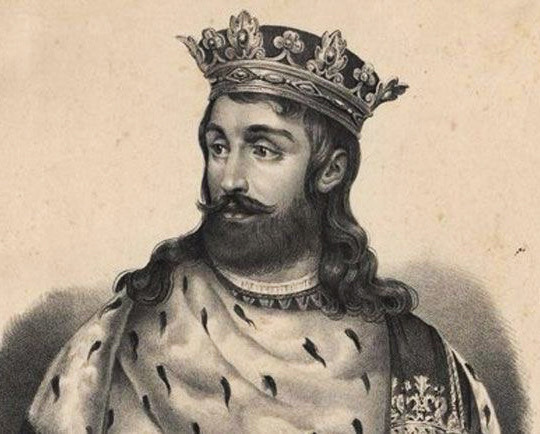
1) Pedro I of of Portugal, certainly, one if the most renowned portuguese monarchs, largely due to the saga of “love and passion” with Inês de Castro. Yet, it was common knowledge that she wasn't the Pedro’s only love: he harboured a passion for his squire, Afonso Moreira, a relationship that ended as disastrously as his other romantic (or not) entanglements. On one fateful occasion, Afonso was caught in bed with Catarina Tosse, wife of Lourenço Gonçalves, who was an esteemed magistrate.
Throughout his reign, Pedro earned the epithet “the Cruel” for his ruthless administration of justice, whereby transgressions of any magnitude often resulted in swift execution. Pedro’s decision to order Afonso’s castration as punishment for his adultery starkly manifested his merciless ethos. Nevertheless, according to Fernão Lopes, a chronicler of portuguese court at the time, in chapter VIII of “Crônica de el-rei D. Pedro I”, his harshness stemmed from a surge of jealousy on the king’s part upon discovering his beloved squire’s relationship with a woman.
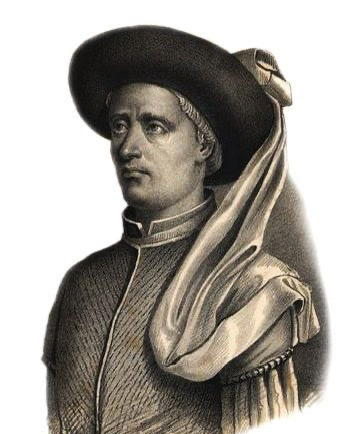
2) Prince Henry, revered as “the Navigator”, occupies a central role particularly during the epoch of maritime exploration.
He was hailed as “chaste prince”, having never entered into wedlock, with no historical accounts suggesting (with certainty) any relationships with women. In the annals of 1444, Henry experienced the loss of a “dear friend” in Ceuta, a tragedy that pluged him into 3 months of profound mourning. Both his father, King John I, and his brother, King Edward, counselled him to “rein in his emotions, lest he indulge men beyond what virtue dictates.”
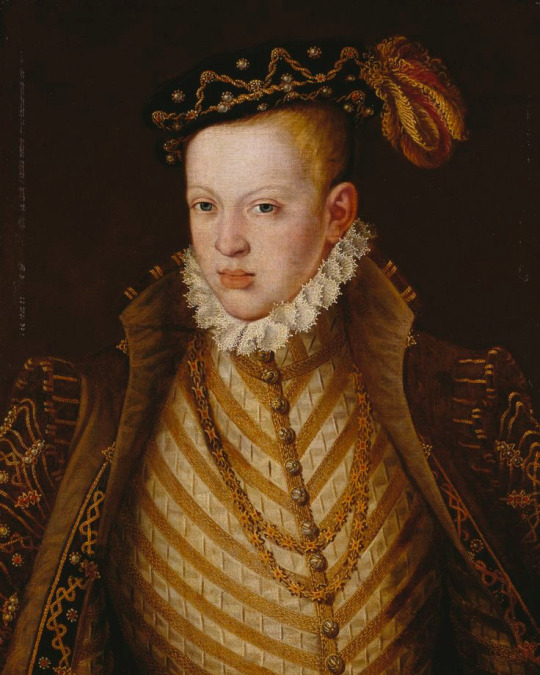
3) King Sebastian contracted gonorrhoea at the age 10/11, a malady documented in medical records at the time that rendered him sexually impotent. Some historians posit that this affliction may have dissuaded Sebastian from pursuing matrimonial unions or romantic relationships with women.
Even though, the “Crônicas de el-rei D. Sebastião” by Friar Bernardo da Cruz recounts an incident during a hunt in the Alentejo, where the entourage of nobles accompanying King Sebastian were stirred by a commotion. Investigating the disturbance, they stumbled upon the monarch locked in an embrance with a fugitive slave amidst the woodland.

4) King Afonso VI, sibling to Queen Catarina of Braganza, earned a reputation for rebeliouness and unruliness from a tender age, yet he harboured no ambitions for kingship.
His reign , marred by a series of missteps, was etched in history for its futile ventures. Despite grappling with severe health afflictions — such as partial paralysis stemming from hemiplegic fever, and scourge of bulimia — Afonso found solace in nocturnal escapades with his inner circle of friends. Among them was António Conti, an intalian peddler of opulent attire and accoutrements to Europe’s nobility. Conti’s sway in Afonso’s court burgeoned as he assumed the role of sartorial advisor and facilitator of introductions to foreign luminaries. Also, both grew increasingly closer to esch other, with Afonso avoiding royal gatherings to spend time with Conti, mostly in his chambers.
In 1666, Afonso took the hand of Maria Francisca Isabel of Savoy, yet their union was fleeting. Maria, citing non-consummation owing to Afonso’s hemiplegia, sought an annulment. In letters to his sister, he bemoaned Maria’s coercive measures, by which she compelled him into relationships with 14 courtesants in a bid to unearth the root of their marital discord.
Seeking to shield Afonso’s sovereignty and secure the portuguese lineage, Luisa de Gusmão, his mother, sanctioned the arrest and subsequent exile of Conti to the distant shores of Brazil.
#i am sorry for how long it is#but i really wanted to post it#so there you have#theres other monarchs to talk about#but these are the ones with the most evidences#pedro i of portugal#prince henry#king sebastian#afonso vi of portugal#historical facts#portugal
13 notes
·
View notes
Text

Albert Gregorius - Portrait of King Joao VI - 1826
Dom John VI (Portuguese: João VI; 13 May 1767 – 10 March 1826), nicknamed "the Clement", was King of the United Kingdom of Portugal, Brazil and the Algarves from 1816 to 1825. Although the United Kingdom of Portugal ceased to exist de facto beginning in 1822, he remained its monarch de jure between 1822 and 1825. After the recognition of the independence of Brazil under the Treaty of Rio de Janeiro of 1825, he continued as King of Portugal until his death in 1826. Under the same treaty, he also became titular Emperor of Brazil for life, while his son, Emperor Pedro I, was both de facto and de jure the monarch of the newly independent country.
John VI was born in Lisbon in 1767 during the reign of his maternal grandfather, King Dom Joseph I of Portugal. He was the second son of the Princess of Brazil and Infante Peter of Portugal, who later became Queen Dona Maria I and King Dom Peter III. John became heir to the throne when his older brother, Prince José, died of smallpox in 1788 at the age of 27. Before his accession to the Portuguese throne, John bore the titles Duke of Braganza, Duke of Beja, and Prince of Brazil. From 1799, he served as prince regent due to the mental illness of his mother. In 1816, he succeeded his mother as monarch of the Portuguese Empire, with no real change in his authority, since he already possessed absolute powers as regent.
One of the last representatives of absolute monarchy in Europe, John VI lived during a turbulent period; his reign never saw a lasting peace. Throughout his period of rule, major powers, such as Spain, France and Great Britain, continually intervened in Portuguese affairs. Forced to flee across the Atlantic Ocean to Brazil when troops of the Emperor Napoleon I invaded Portugal, he found himself faced there with liberal revolts; he was compelled to return to Europe amid new conflicts. His marriage was no less conflictual, as his wife Carlota Joaquina of Spain repeatedly conspired against her husband in favor of personal interests or those of her native Spain.
John lost Brazil when his son Pedro declared independence, and his other son Miguel (later Miguel I of Portugal) led a rebellion that sought to depose him. According to recent scholarly research, his death may well have been caused by arsenic poisoning. Notwithstanding these tribulations John left a lasting mark, especially in Brazil, where he helped to create numerous institutions and services that laid a foundation for national autonomy, and many historians consider him to be a true mastermind of the modern Brazilian state. John's contemporaries viewed him as a kind and benevolent king, although later generations of Portuguese and Brazilians have made him the subject of frequent caricature.
Albert Jacob Frans Gregorius, or Albert Jacques François Grégorius (26 October 1774, Bruges - 25 February 1853, Bruges) was a Flemish-Belgian portrait painter and Director of the art academy in Bruges.
16 notes
·
View notes